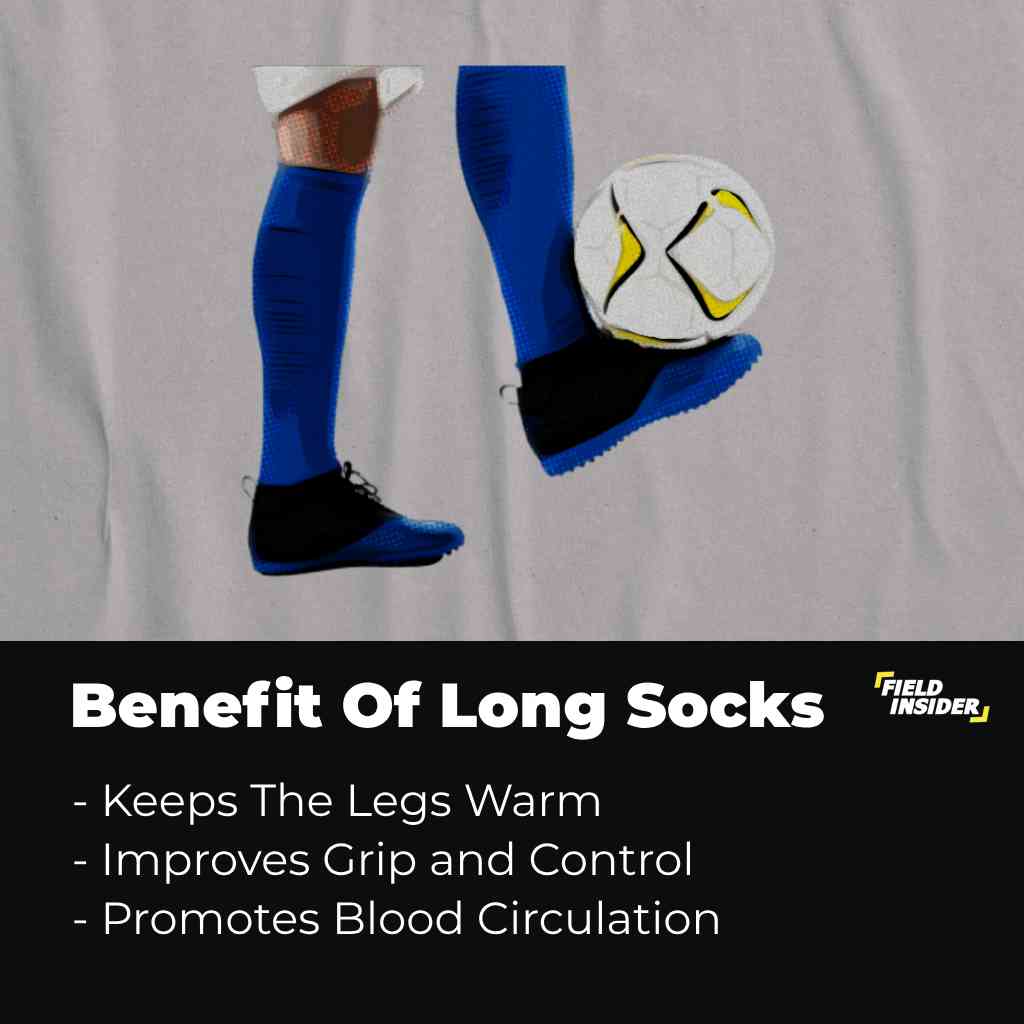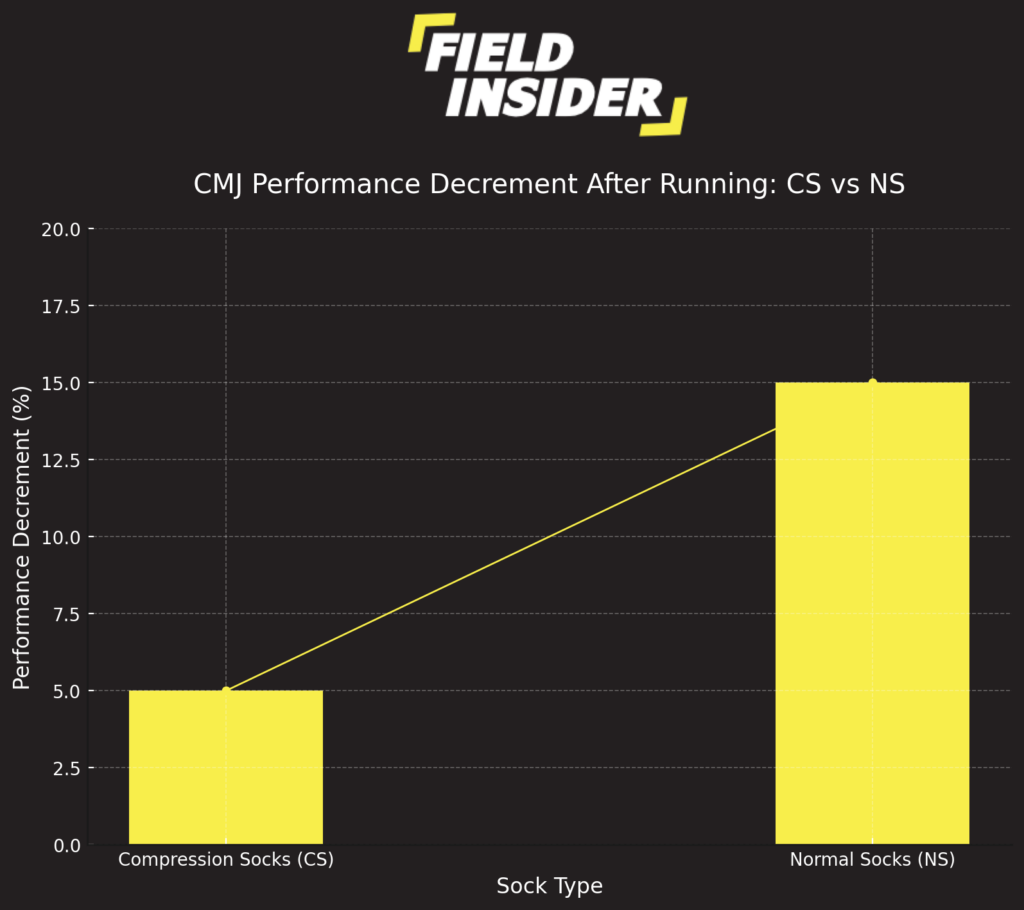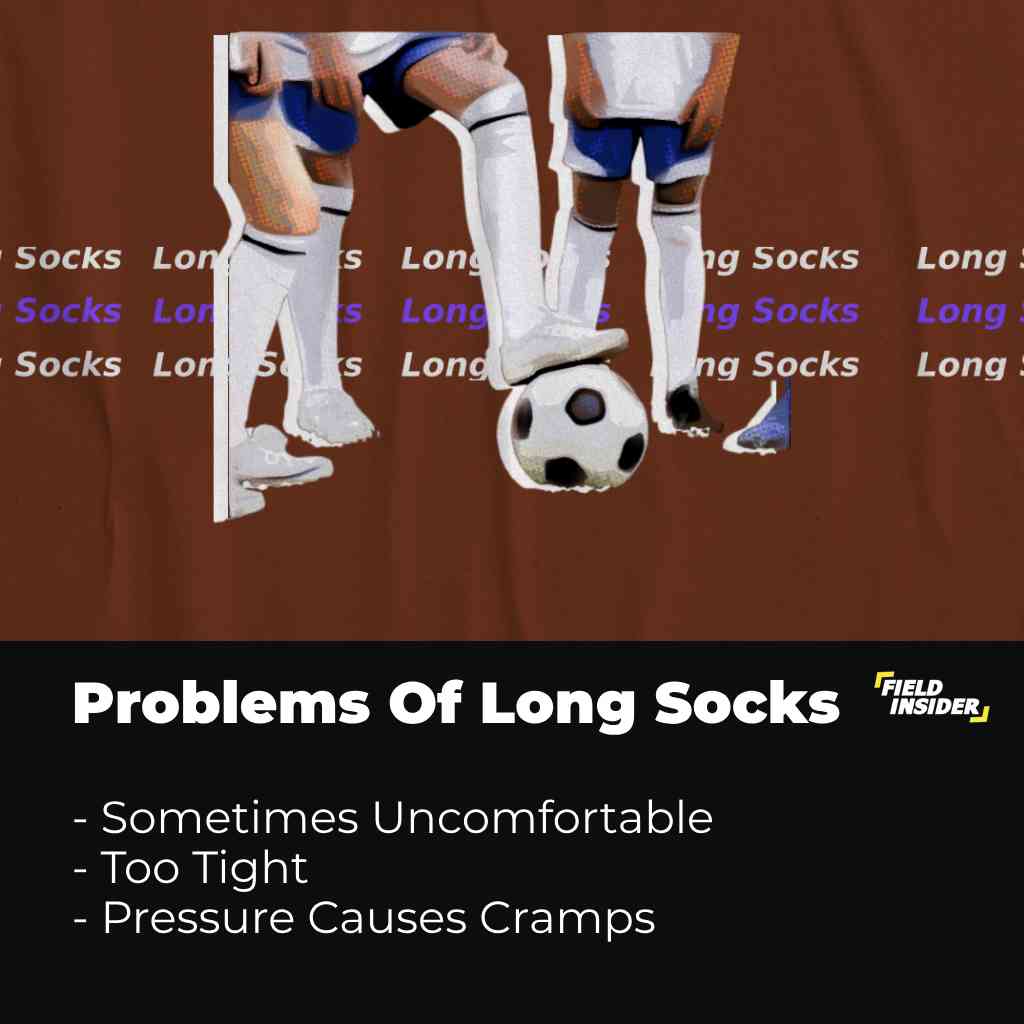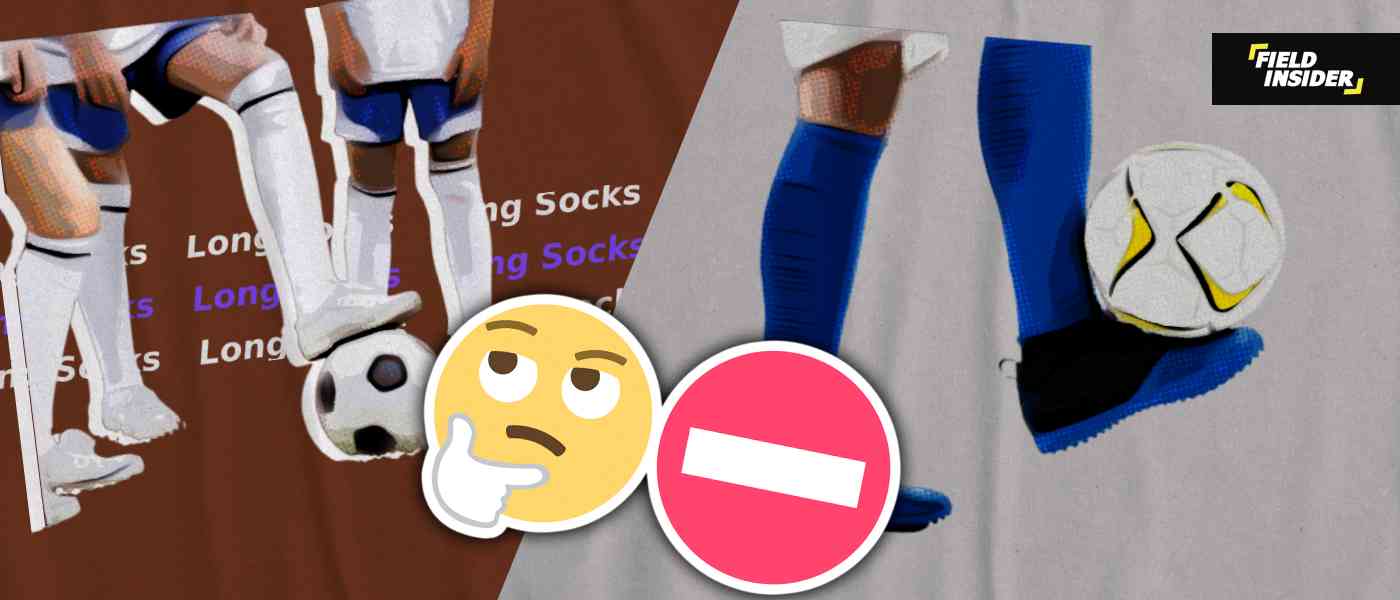Why Do Footballers Wear Long Socks? Deep Dive
Over the years, football has undergone significant transformations. Originally, it was a basic game requiring minimal gear—a ball and perhaps shoes. Today, the sport involves an array of sophisticated clothing. Footballers now wear long socks, compression shirts, and even thermal wear, illustrating the extent of its evolution.
In generally, the modern game is adamant on having all sorts of equipment aimed at enhancing player performance and ensuring their safety on the field.
Among the various gear incorporated into football, socks have become a crucial component. They not only contribute to better performance but have also emerged as a stylish accessory in the sport’s attire.
Key Takeaways
| Topics | Details |
|---|---|
| Historical and Background Context | How wearing long socks came to be in football |
| Practical Benefits | Unveiling why wearing sock is advantageous |
| Research and Analysis | Data and citations from trusted sources |
| Challenges and Limitations | Issues with the current style and design of soccer socks |
| Solutions | Probable solution to most common issues with football socks |
Do Footballers Wear Long Socks Cause Its Just a Fashion Trend?
It is customary for footballers to wear socks that match their team’s colors. This is because they are considered to be part of the uniform. Socks with different colors are uncommon on the playing field.
Footballers may wear long socks to combine their team colors with the bright or neon colors of the socks in order to distract their opponents. The way socks are worn, as well as their length, has become an important part of footballers’ style and appearance.
Players create their own socks, tailoring them to their specific needs and desires. They try to make them as comfortable as possible while maintaining an appealing appearance.
When Did Footballers Start to Wear Long Socks?
Wearing long socks didn’t just come to be. It resulted from the use of shin guards, which were first adopted in cricket as a piece of standard equipment.
Later, shin guards were adopted into soccer, and Sam Weller Widdowson was the first player to wear long socks to cover them up. It was in 1863, when the laws of football were drafted, that the use of shin guards became a mandatory for players.
Its main purpose was to protect against direct, and sometimes brutal, forces and collisions. Up to date, it is still very relevant, as high-impact collusion is very common during the game.
In the early years, they were taken more seriously, as football was once defined by ferocious tackles that were tolerated by referees, and these led to severe injuries to the legs of players.
Currently, a diverse range of options for quality, style, and comfort have emerged in the shin guard used for soccer.
Use Of Socks To Cover Shin Guards
The way shin guards are fashioned and designed, they are made to protect the shin bone (the tibia). It is a protective piece that is made to fit snugly against the skin of the leg.
The area in which it covers starts from above the ankle and moves all the way to just below the knee. Since the shape of the legs differs, it is important to make sure your shin guard is appropriate for you and fits perfectly.
Now, there are two ways a shin guard stays on the shin of a player: through cuffs of straps.
| Cuffs | Straps |
|---|---|
| Cuffs are compression stocks that hold the shin guard to the skin | Straps are holding mechanisms that make use of adjustable tape to hold the guard |
| They are better at staying in place | Requires tape to hold it in place |
| It does not require any medium to hold it in place | Requires a holding tape to hold it in place |
Long Socks Impact On Shin Guards
Even with these two types of holding mechanisms for holding the shin guard to the leg, tight socks are implemented to hold them firmly in place. These socks are often tight and thick, enough to ensure that the shin guard neither comes off nor slides down.
These athletic socks are called compression socks and are utilized by many sports athletes including footballers.
This is because one of the most important aspects of football safety is keeping the shin guards in place. However, the socks used must be tight enough so that the guards do not shift and slip down, but not so tight that they restrict blood circulation.
Are Long Socks Important to Cover the Shin Guards?
The official rules of football, specify that both shins and socks must be of adequate length and that socks must cover the shins.
During the game, especially when involved in a duel game or dribbling, there is a good chance you will be tackled from the side, putting a lot of pressure on your fibula or ankle.
If the socks are not properly fastened, this contact may cause the shin guard to move, resulting in an injury. Severe injuries that severely limit a player’s playing potential may occur.
More than Just Long Socks
Footballers wear long socks because they cover the shin guards and keep them steady and firm. In this manner, the shins will absorb all of the force from a duel or a tackle, leaving the leg unharmed.
Benefits Of Wearing Long Socks In Football

1. Keeping The LeG Warm
Footballers frequently wear long socks to keep their legs warm, especially on cold winter nights. Football players are not permitted to wear pants. They must be dressed in their team uniform, which consists of a jersey, shorts, and long socks.
Muscle cramps are caused by poor blood circulation and muscle contraction when your muscles are not active enough or are exposed to cold air. Football players wear long socks that cover a large area of their legs to keep their leg muscles warm.
This reduces the likelihood of muscle cramps. Furthermore, improved blood circulation in your legs improves your comfort and movement, which improves your performance on the field.
2. Protection From Injuries
The protection offered by long socks in football is for two main parts of the leg: the feet and the shin bone.
Friction between the skin of the feet and the inner lining of football boots often causes corns, calluses, and blisters. Therefore, the material with which football socks are made to reduce this friction, making playing more comfortable.
As for the shin bone (tibia), long socks come in handy by holding the shin guard, preventing direct impacts that could prove severe to the footballer’s leg.
Likewise, the risk of having scratches and bruises when performing slide tackles is minimal when long socks are in use. This is part of the motivations as to why it is common among defenders.
3. Improves Grip And Control
The material and fitting of long socks give players better ball control and maneuverability when using soccer cleats. They sometimes act as a form of padding that ensures that the feet of footballers fit perfectly into the soccer cleats by eliminating the excess gaps.
Subsequently, this leads to a better feel of football boots and even enhances grip, ball possession, pass accuracy, and even goal-scoring ability.
4. Promotes Blood Circulation
Modern football socks are compression socks, which are tight at the feet and reduce in the level of constriction as they move towards the knees. This helps to improve the flow of blood out the leg.
What this design does is prevent the pooling of blood in the leg. The reason this occurs at the leg is because the blood vessels have to overcome gravity to move blood out of the leg. Therefore, it is more difficult for oxygenated blood to get into the leg, in turn causing soreness and fatigue.
Other benefits include:
- reduces swelling;
- promotes return and recirculation of blood around the leg; and
- prevent Deep Vein Thrombosis (DVT)
Studies And Research
According to research published in January 2022 on ncbi.nhi.gov titled “Effects of Wearing Compression Stockings on Exercise Performance and Associated Indicators: A Systematic Review”, it was deduced that compression socks (long athletic socks that get up to the knees) had better control for muscle fatigue.
During the research, it was shown that the underlying mechanism of the socks had better preservation of muscle function. This, when compared to a normal sock, resulted in minimal or no decrease in performance in post-exercise muscle tests, such as running time trials or soccer matches.
Tests used to confirm this include the countermovement jump (CMJ), heel-rise test, isometric peak torque, and other rigorous physical activity with minimal recovery time.

Also, from another study, it was visible that compression socks (CS) used in football group had a greater post-match performance for the agility T-test and heel-rise test, indicating less fatigue.
The research is titled “Can compression stockings reduce the degree of soccer match-induced fatigue in females?” and it compiles results from YoYo Intermittent Endurance Test, Agility T-tests and High rise heel test. Read on research paper here.

Why do Some Footballers Cut Holes in Their Long Socks?
The most well-known individual footballer known for wearing long socks with large holes is the British Kyle Walker. He was frequently seen with large, gaping holes in his socks, which he had clearly done himself. Why does he take the scissors and cut holes all the way down the back of the socks?
The reasoning behind this is entirely practical and reasonable. Football socks today are tight and long in length. This was required to keep the shin guards in place due to the intense dynamic and contact game of football.
for comfort & releasing pressure
Not only that, but players’ calves are quite muscular, making the fabric of the socks even tighter and less comfortable. Some players, such as Kyle Walker, do everything they can to relieve tension in the lower half of their legs.
Also, due to the fact that football socks are compression socks, some of them might be too tight and lead to the tightening of blood vessels along the skin.

These holes relieve muscle tension by creating more space in the back of the socks and stretching the fabric. This reduces the likelihood of cramping during the game and prevents pain during long matches.
Why Do Footballers Wear Long Socks Above The Knee?
For many players, the height of there sock is just below there knee, however, other footballers wear long socks above the knee.
The idea of wearing long socks that reach up to the knee is also part of footballers preferences when it comes to the styling of their football socks. However, this does not mean that it does not have beneficial functions.
Firstly, soccer players wear football socks above the knee to keep shin guards in place and avoid frequent mid-game adjustments.
When long socks that reach above the knee are used, the chances that the guards slide down during games are even less than for lengths under the knee.
Also, aside from keeping the guards in place, many players find it to be a nice fashion habit as it has a great look with their team jersey. Other soccer players also say it gives them a bit of added comfort when playing.
Do Long Socks Today Fit Footballers’ Requirements?
The Problem of Long Socks
This suggests that football sock manufacturers did not realize the importance of elasticity in the back of the socks, especially long socks, which cover the entire lower half of the leg.
When they are too tight, they create a lot of pressure! In turn, this increases the chances of the muscles burning out and cramping. The latest trend of cutting holes in them demonstrates how players’ needs have changed. Long socks have evolved from their original function of covering and holding shin guards.
Players are now wearing them below the top line of the guards. This allows their calves to be free and relieves muscle tension. The increased pressure in the back of long socks caused this new trend, with players attempting to make their equipment more comfortable.

The Solution
Manufacturers must adapt to these conditions and meet the needs of the players. Their gear must be as comfortable as possible while also keeping them safe. If long socks and shin guards are designed to protect football players, then they must also be comfortable to wear during the game.
There are numerous methods for increasing comfort, whether it’s through increased elasticity in the back part of the fabric or already created holes in them, so the players don’t have to do it themselves.
All of these minor adjustments can help players feel more at ease and adaptable in their gear. Modifying the equipment in this manner will improve the footballers’ physical capabilities. This is because the extra space in the back will reduce the possibility of muscle burn and cramps.
This will undoubtedly affect their gameplay and improve their performance on the field, during training sessions, and during competitive matches.
conclusion
In conclusion, the use of long socks in football, often perceived as a mere fashion statement or tradition, holds significant practical value. As we’ve explored in this article, these socks are not just about style; they offer essential benefits like warmth, comfort, and safety.
Crucially, they serve the vital function of supporting and securing shin guards, ensuring players’ protection during the intense action of the game.








